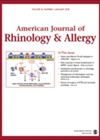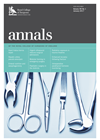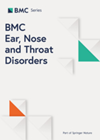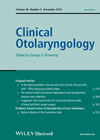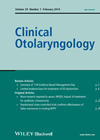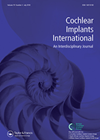
Journal Reviews archive for 2014
Improving smell outcomes after sinus surgery: impregnated dressings?
There is much we can do to improve the airway of patients with chronic sinus disease, especially those with polyps. However, the olfactory outcomes are usually disappointing and patients miss this important sensory modality, which has an effect on their...
What do we put in our nasal douches? Anything?
The rise of the popularity of saline nasal douches, with several commercial preparations available, may be a rediscovery of an age-old tradition, but it has been shown to benefit patients. The question then arises as to whether this can be...
Consequences of tonsillectomy rationing?
This article examines Hospital Episode Statistics and Office for National Statistics data to investigate the change in rates of tonsillectomy and admissions for tonsillitis and its complications, over a 20-year period. Between 1991 and 2011, 44% fewer tonsillectomies were performed....
Trends in parathyroidectomy
The authors retrospectively analysed Hospital Episode Statistics data for parathyroidectomy between 2000 and 2010. Overall, parathyroidectomy rates nearly doubled from 3.3/100,000 population in 2000 to 5.8/100,000 in 2010, with particularly significant increases in elderly patients. The authors attribute this rise...
3D ultrasonography for evaluation of muscles following facial palsy
Reconstructive surgery for facial nerve palsies is not recommended beyond two to three years after a degenerative facial nerve lesion. Since the time course of muscle atrophy is variable, this timeline is a rough guideline. The only assessment method currently...
Balloon dilatation of the eustachian tube: An evidence based review
Eustachian tube dysfunction has long provoked debate among otolaryngologists with wide-spread variation in management. Establishing a safe and effective surgical technique to bring about resolution would be of benefit to those affected, with an estimated incidence of 0.9% in the...
Clinical coding: variability and error in otolaryngology
The ever topical spectre of coding in otolaryngology is comprehensively evaluated in this article. It attempts to debunk the mystique of current coding practices and the challenge of health informatics in the modern NHS. A total of 3131 randomly selected...
National analysis of outcome of head and neck cancer surger
Patient outcomes continue to become ever more visible in the NHS with ongoing drives to demonstrate transparency in our delivery of healthcare. This article reviews unit-level data publication using Hospital Episode Statistics data in all units undertaking head and neck...
Management of metastatic neck disease
This article publishes the findings of a recent expert-led evidence based management symposium in the UK with recommendations according to the SIGN level of evidence and grading. The article neatly summarises the key points, and its clarity despite the complexity...
Cost effectiveness and vestibular schwannoma surgery
This is the first cost effectiveness modelling study looking at the three main treatment options for small to medium sized vestibular schwannomas. This study uses the widely accepted cost per quality adjusted life year (QALY) outcome measure to evaluate three...
Sham controlled trial: BPPV
I was drawn to this study and it proved an enlightening read; it also is a good example of where recommendations of a Cochrane review for long-term evidence of benefit have been acted upon! The study looked at the efficiency...
Cochlear implantation in elderly candidates and effect on quality of life
The authors aimed to assess the improvement in quality of life (QoL) of cochlear implant patients over 60 and its relation to audiometric benefits. An observational retrospective study was conducted on 26 individuals older than 60. The outcome was compared...

